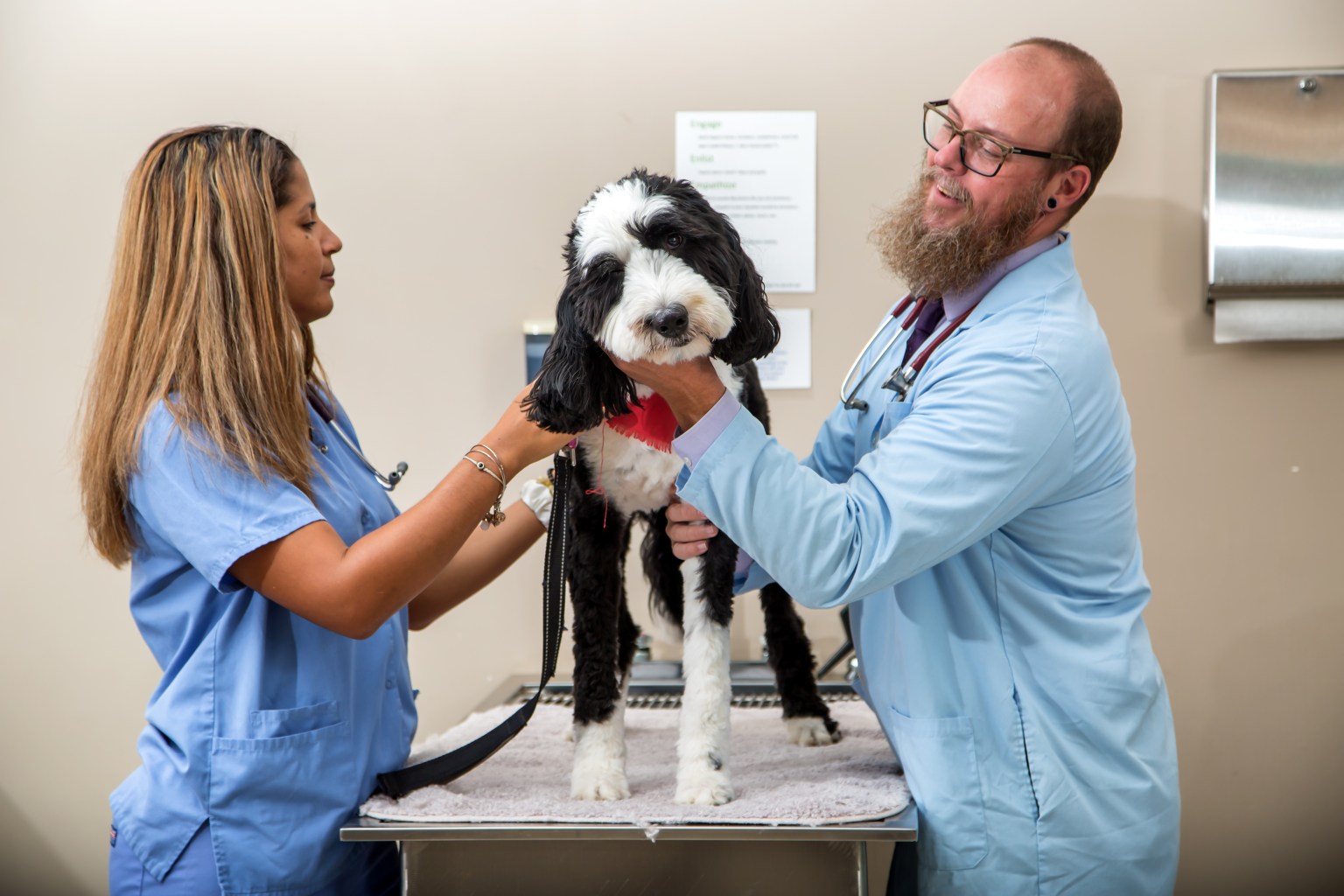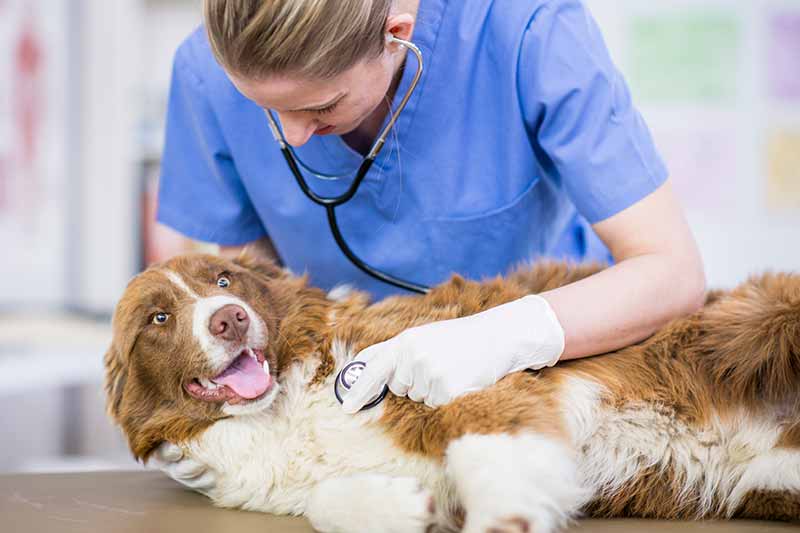The Importance of Very Early Discovery: Insights From a Vet Oncologist
Early detection of cancer in pet dogs is an essential subject for pet dog proprietors and vet experts alike. Veterinary oncologists emphasize the importance of identifying refined signs that might show severe health and wellness issues. Usual signs and symptoms commonly go undetected until they escalate. Recognizing these very early warning indicators and improvements in diagnostic strategies can make a substantial difference. What actions can family pet owners require to improve their pets' opportunities of early medical diagnosis and much better treatment results?
Understanding Cancer Cells in Animals: Common Kinds and Symptoms
While several animal owners might not realize it, cancer cells is a significant wellness issue impacting pets, just like it carries out in humans. Usual kinds of cancer cells in pets include lymphoma, pole cell tumors, osteosarcoma, and mammary growths. These malignancies can materialize in numerous ways, depending upon their area and type. Signs and symptoms frequently consist of unexplained weight loss, persistent throwing up, adjustments in hunger, or unusual lumps and bumps. Pets may additionally show lethargy, problem breathing, or hesitation to exercise, which can suggest underlying health concerns. Early indicators can be subtle, making it necessary for pet dog owners to be observant of their family pets' actions and physical problem. Understanding these common types and connected signs and symptoms can encourage proprietors to seek veterinary care quickly, potentially causing earlier medical diagnosis and therapy alternatives. Identifying the indicators of cancer cells in pets is a vital step towards improving their health and lifestyle.
The Function of Veterinary Oncologists in Early Discovery
Vet oncologists play an essential role in the early detection of cancer cells in animals, as their specialized training equips them with the skills necessary to identify subtle indicators that might be forgotten by basic professionals. They use a combination of professional experience and progressed analysis tools to evaluate patients thoroughly - Veterinary Oncologist. By identifying very early signs and danger aspects, oncologists can assist animal owners towards prompt interventions, increasing the opportunities of successful treatment
Vet oncologists usually team up with general practitioners to establish screening protocols customized to particular types or age groups, boosting the efficiency of very early detection initiatives. They educate pet dog owners on the relevance of routine exams and understanding of adjustments in habits or physical problem. With these aggressive steps, vet oncologists greatly add to improving results for pets identified with cancer, highlighting the critical nature of their function in vet health care.
Developments in Diagnostic Techniques for Pet Dog Cancer
Developments in diagnostic methods have actually considerably improved the capability to find cancer cells in pet dogs at earlier phases. Techniques such as advanced imaging, including MRI and CT scans, offer in-depth interior views, enabling vets to identify growths that might not be palpable. In addition, the development of minimally intrusive treatments, such as great needle aspirates and biopsies, allows exact sampling of cells for histopathological assessment with decreased tension for the animal.
Emerging molecular diagnostics, including genetic screening and biomarker recognition, are changing the landscape of veterinary oncology. These techniques can read this identify specific cancer cells kinds and anticipate reactions to treatment, helping with personalized care strategies. Innovations in research laboratory methods, such as liquid biopsies, are starting to use non-invasive options for monitoring lump progression and therapy effectiveness. Collectively, these innovations stand for a considerable leap ahead in veterinary medication, emphasizing the critical duty of early discovery in improving end results for animals diagnosed with cancer cells.
How Family Pet Owners Can Recognize Caution Signs
Just how can pet proprietors become attentive in recognizing possible caution indications of cancer cells? Awareness of behavior and physical modifications in pets is necessary. Common signs consist of unusual lethargy, loss of cravings, or sudden weight adjustments. Pet owners need to also focus on persistent vomiting or looseness of the bowels, which may indicate underlying concerns.
Changes in the skin, such as lumps, bumps, or sores that do not recover, necessitate immediate veterinary interest. In addition, owners ought to keep in mind adjustments in drinking routines, raised peeing, or difficulty in breathing. Unusual hopping or pain might additionally be signs of more major problems.
Normal veterinary check-ups can assist determine these indication early. By maintaining a close observation of their animals' health and wellness and actions, proprietors can play a vital role in early detection, potentially causing far better end results should cancer be diagnosed. Recognizing these signs may significantly affect a family pet's lifestyle.
The Effect of Early Discovery on Treatment Results
Early detection of cancer in animals plays a crucial duty in establishing therapy results, as it commonly enables for a wider variety of therapeutic options. When cancer cells is detected in its very early stages, veterinarians can apply much less invasive treatments, raising the chance of effective intervention. Early-stage cancers might likewise respond far better to radiation treatment or radiation, resulting in improved survival prices and general high quality of life for the pet.
In addition, timely diagnosis facilitates a more customized therapy strategy, lining up with the certain requirements of the animal. This can include individualized medicine routines or surgical interventions that are much less aggressive. Conversely, late-stage discovery typically leads to limited alternatives, extra hostile therapies, and poorer diagnoses. As a result, the value of early detection can not be overstated; it essentially changes the trajectory of therapy, making it essential for pet proprietors to remain alert for any kind of indications of ailment in their beloved companions.
Frequently Asked Concerns

Just How Can Diet Regimen Impact Cancer Threat in Pet Dogs?
Diet plan significantly influences cancer danger in family pets, as certain look at this web-site nutrients and food types can either promote or prevent tumor development. A well balanced, nutrient-rich diet may assist decrease the probability of establishing cancer cells in pets.
Are Particular Types More Prone to Cancer?
Particular pet dog types, such as Golden Retrievers and Martials artists, display higher cancer cells sensitivity as a result of hereditary tendencies. Likewise, some feline types also show increased cancer cells threats, highlighting the relevance of breed-specific health awareness amongst pet proprietors.
What Are the Costs Related To Very Early Cancer Detection?
The expenses connected with early cancer cells detection can differ significantly, encompassing diagnostic examinations, assessments, and potential treatments - Board Certified Veterinary Oncologist. Spending in these services commonly leads to far better health results, inevitably saving on extra considerable future medical costs
Can Vaccinations Prevent Cancer Cells in Pet Dogs?


Vaccinations may minimize the threat of specific cancers cells in pets, especially those connected to viral infections. Their effectiveness varies, and family pet proprietors should seek advice from vets for customized advice relating to inoculation and cancer cells avoidance strategies.
How Typically Should Pet Dogs Be Evaluated for Cancer?
Pets ought to normally be evaluated for cancer cells each year, specifically as they mature or visit this page if they exhibit risk elements. Routine vet exams can aid recognize potential issues early, improving treatment outcomes and overall health management.
Early detection of cancer in animals is a vital subject for family pet proprietors and vet specialists alike. Early indications can be refined, making it essential for pet dog proprietors to be watchful of their pets' habits and physical condition. Veterinary oncologists play a crucial duty in the very early discovery of cancer in animals, as their specialized training equips them with the skills essential to recognize subtle signs that might be ignored by general specialists. By maintaining a close monitoring of their pet dogs' wellness and habits, owners can play a key duty in very early detection, potentially leading to better end results need to cancer cells be identified. Early detection of cancer in pets plays an important role in determining therapy end results, as it usually enables for a larger range of therapeutic options.